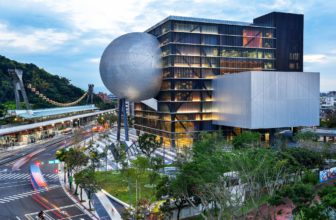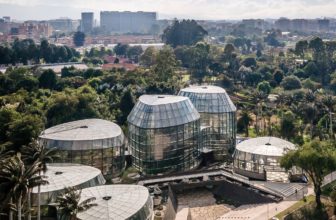Architects newspaper posted a comment of Michael Sorkin, who is an American architectural critic and author of several hundred articles in a wide range of both professional and general publications. Also, a former professor at numerous schools of architecture including the Architectural Association, the Aarhus School of Architecture, and Cooper Union.
The comment contains two hundred and fifty things an architect should know. Although it’s a long list, we feel it’s very interesting to share it with you! At the very least, it might help you know what you are getting yourself into, or what you still need to know as an architect – there are things that will make you fail as an architect and things that will take you to an advanced level!

Do you think something else is missing? Feel free to share your thoughts in the comments below!
250 things an architect should know
- The feel of cool marble under bare feet.
- How to live in a small room with five strangers for six months.
- With the same strangers in a lifeboat for one week.
- The modulus of rupture.
- The distance a shout carries in the city.
- The distance of a whisper.
- Everything possible about Hatshepsut’s temple (try not to see it as ‘modernist’ Avant la Lettre).
- The number of people with rent subsidies in New York City.
- In your town (include the rich).
- The flowering season for azaleas.
- The insulating properties of glass.
- The history of its production and use.
- And of its meaning.
- How to lay bricks.
- What Victor Hugo really meant by ‘this will kill that.’
- The rate at which the seas are rising.
- Building information modeling (BIM).
- How to unclog a rapidograph.
- The Gini coefficient.
- A comfortable tread-to-riser ratio for a six-year-old.
- In a wheelchair.
- The energy embodied in aluminum.
- How to turn a corner.
- How to design a corner.
- How to sit in a corner.
- How Antoni Gaudí modeled the Sagrada Família and calculated its structure.
- The proportioning system for the Villa Rotonda.
- The rate at which that carpet you specified off-gasses.
- The relevant sections of the Code of Hammurabi.
- The migratory patterns of warblers and other seasonal travelers.
- The basics of mud construction.
- The direction of prevailing winds.
- Hydrology is destiny.
- Jane Jacobs in and out.
- Something about feng shui.
- Something about Vastu Shilpa.
- Elementary ergonomics.
- The color wheel.
- What the client wants.
- What the client thinks it wants.
- What the client needs.
- What the client can afford.
- What the planet can afford.
- The theoretical bases for modernity and a great deal about its factions and inflections.
- What post-Fordism means for the mode of production of building.
- Another language.
- What the brick really wants.
- The difference between Winchester Cathedral and a bicycle shed.
- What went wrong in Fatehpur Sikri.
- What went wrong in Pruitt-Igoe.
- What went wrong with the Tacoma Narrows Bridge.
- Where the CCTV cameras are.
- Why Mies really left Germany.
- How people lived in Çatal Hüyük.
- The structural properties of tufa.
- How to calculate the dimensions of brise-soleil.
- The kilowatt costs of photovoltaic cells.
- Vitruvius.
- Walter Benjamin.
- Marshall Berman.
- The secrets of the success of Robert Moses.
- How the dome on the Duomo in Florence was built.
- The reciprocal influences of Chinese and Japanese building.
- The cycle of the Ise Shrine.
- Entasis.
- The history of Soweto.
- What it’s like to walk down the Ramblas.
- Back-up.
- The proper proportions of a gin martini.
- Shear and moment.
- Shakespeare, etc.
- How the crow flies.
- The difference between a ghetto and a neighborhood.
- How the pyramids were built.
- Why.
- The pleasures of the suburbs.
- The horrors.
- The quality of light passing through the ice.
- The meaninglessness of borders.
- The reasons for their tenacity.
- The creativity of the ecotone.
- The need for freaks.
- Accidents must happen.
- It is possible to begin designing anywhere.
- The smell of concrete after rain.
- The angle of the sun at the equinox.
- How to ride a bicycle.
- The depth of the aquifer beneath you.
- The slope of a handicapped ramp.
- The wages of construction workers.
- Perspective by hand.
- Sentence structure.
- The pleasure of a spritz at sunset at a table by the Grand Canal.
- The thrill of the ride.
- Where materials come from.
- How to get lost.
- The pattern of artificial light at night, seen from space.
- What human differences are defensible in practice.
- Creation is a patient search.
- The debate between Otto Wagner and Camillo Sitte.
- The reasons for the split between architecture and engineering.
- Many ideas about what constitutes utopia.
- The social and formal organization of the villages of the Dogon.
- Brutalism, Bowellism, and the Baroque.
- How to derive.
- Woodshop safety.
- A great deal about the Gothic.
- The architectural impact of colonialism on the cities of North Africa.
- A distaste for imperialism.
- The history of Beijing.
- Dutch domestic architecture in the 17th century.
- Aristotle’s Politics.
- His Poetics.
- The basics of wattle and daub.
- The origins of the balloon frame.
- The rate at which copper acquires its patina.
- The levels of particulates in the air of Tianjin.
- The capacity of white pine trees to sequester carbon.
- Where else to sink it.
- The fire code.
- The seismic code.
- The health code.
- The Romantics, throughout the arts and philosophy.
- How to listen closely.
- That there is a big danger in working in a single medium. The logjam you don’t even know you’re stuck in will be broken by a shift in representation.
- The exquisite corpse.
- Scissors, stone, paper.
- Good Bordeaux.
- Good beer.
- How to escape a maze.
- QWERTY.
- Fear.
- Finding your way around Prague, Fez, Shanghai, Johannesburg, Kyoto, Rio, Mexico, Solo, Benares, Bangkok, Leningrad, Isfahan.
- The proper way to behave with interns.
- Maya, Revit, Catia, whatever.
- The history of big machines, including those that can fly.
- How to calculate ecological footprints.
- Three good lunch spots within walking distance.
- The value of human life.
- Who pays.
- Who profits.
- The Venturi effect.
- How people pee.
- What to refuse to do, even for the money.
- The fine print in the contract.
- A smattering of naval architecture.
- The idea of too far.
- The idea of too close.
- Burial practices in a wide range of cultures.
- The density needed to support a pharmacy.
- The density needed to support a subway.
- The effect of the design of your city on food miles for fresh produce.
- Lewis Mumford and Patrick Geddes.
- Capability Brown, André Le Nôtre, Frederick Law Olmsted, Muso Soseki, Ji Cheng, and Roberto Burle Marx.
- Constructivism, in and out.
- Sinan.
- Squatter settlements via visits and conversations with residents.
- The history and techniques of architectural representation across cultures.
- Several other artistic media.
- A bit of chemistry and physics.
- Geodesics.
- Geodetics.
- Geomorphology.
- Geography.
- The Law of the Andes.
- Cappadocia first-hand.
- The importance of the Amazon.
- How to patch leaks.
- What makes you happy.
- The components of a comfortable environment for sleep.
- The view from the Acropolis.
- The way to Santa Fe.
- The Seven Wonders of the Ancient World.
- Where to eat in Brooklyn.
- Half as much as a London cabbie.
- The Nolli Plan.
- The Cerdà Plan.
- The Haussmann Plan.
- Slope analysis.
- Darkroom procedures and Photoshop.
- Dawn breaking after a bender.
- Styles of genealogy and taxonomy.
- Betty Friedan.
- Guy Debord.
- Ant Farm.
- Archigram.
- Club Med.
- Crepuscule in Dharamshala.
- Solid geometry.
- Strengths of materials (if only intuitively).
- Ha Long Bay.
- What’s been accomplished in Medellín.
- In Rio.
- In Calcutta.
- In Curitiba.
- In Mumbai.
- Who practices? (It is your duty to secure this space for all who want to.)
- Why you think architecture does any good.
- The depreciation cycle.
- What rusts.
- Good model-making techniques in wood and cardboard.
- How to play a musical instrument.
- Which way the wind blows.
- The acoustical properties of trees and shrubs.
- How to guard a house against floods.
- The connection between the Suprematists and Zaha.
- The connection between Oscar Niemeyer and Zaha.
- Where north (or south) is.
- How to give directions, efficiently and courteously.
- Stadtluft Macht Frei.
- Underneath the pavement the beach.
- Underneath the beach the pavement.
- The germ theory of disease.
- The importance of vitamin D.
- How close is too close.
- The capacity of a bioswale to recharge the aquifer.
- The draught of ferries.
- Bicycle safety and etiquette.
- The difference between gabions and riprap.
- The acoustic performance of Boston Symphony Hall.
- How to open the window.
- The diameter of the earth.
- The number of gallons of water used in a shower.
- The distance at which you can recognize faces.
- How and when to bribe public officials (for the greater good).
- Concrete finishes.
- Brick bonds.
- The Housing Question by Friedrich Engels.
- The prismatic charms of Greek island towns.
- The energy potential of the wind.
- The cooling potential of the wind, including the use of chimneys and the stack effect.
- Paestum.
- Straw-bale building technology.
- Rachel Carson.
- Freud.
- The excellence of Michel de Klerk.
- Of Alvar Aalto.
- Of Lina Bo Bardi.
- The non-pharmacological components of a good club.
- Mesa Verde National Park.
- Chichen Itza.
- Your neighbors.
- The dimensions and proper orientation of sports fields.
- The remediation capacity of wetlands.
- The capacity of wetlands to attenuate storm surges.
- How to cut a truly elegant section.
- The depths of desire.
- The heights of folly.
- Low tide.
- The Golden and other ratios.





